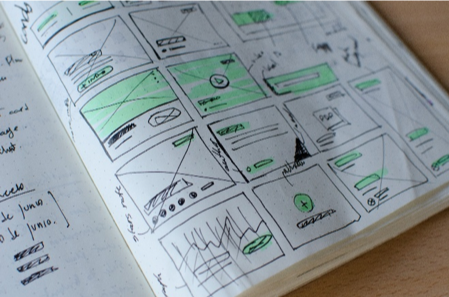Stop Chasing Beauty
My oh my, how I see people and organizations beauty chase. We regularly look to something else in comparison to ourselves and judge our worth there. Whether it be our style, our organizational branding, or our general messaging, it seems our natural state of identity is to always look to define and redefine ourselves through looks. Stop.

Focus on Outcome
While personal and professional branding is more-or-less a requirement in today’s age of social media and instant-access, you’re better off focusing less on ‘looks’ and more on substance. When consulting with clients, I’m always critical of logos, marketing, typography, and more(!), it’s more important to ensure the design is functional, not frivolous. Focus instead on determining (a) what the goal of the design is, (b) the importance of that goal, and (c) if your design is meeting it.
Good to Goal
Don’t just decide that you need a logo, new branding, color scheme, etc. Have a goal for each design. What does a new logo do for you? (a) Signify your actions in visual language, (b) connect a non-descriptive name with services or products, (c) attract potential customers over the competition, (d) all of the above. You determine the goal.
Importance
Now is it really important? No, really! Is your goal, and all the time and costs associated with that, actually that important? New designs just don’t happen; they take professional time and effort. Determine a value for your goal, and then create a budget to meet that goal. If potential customers don’t understand what you do by your logo, etc., and pass you by, what’s that costing you? What is it worth to fix? -Is it a big enough problem to pay for a solution?
Success!?
Now you’ve found an important problem to fix, decided to take the plunge and design something. Great! How do you design for this? How do you determine success?
Knowing what your goal is helps the designer know what problems (and thus visual attributes) to design for. ‘Readability’ and unique ‘visual identity’ are two distinct design challenges -but both could address why people aren’t calling you when they see the flyer. Leverage the problem/goal relationship to define what success is.
Time to test how successful the work is. Don’t ask yourself if you like it. Ask others. Ask pointed questions like (a) What does this design tell you? (b) What does this design make you feel? (c) What does this design [literally] say?
Depending upon your goals, you may even be able to track the impact of the design using (1) Google or Facebook ads to track clicks/likes/etc., (2) or the number of calls/signups/visits/etc., or (3) increases in chatter about the design. What’s important is that your metric tracks with the goal.
Where to begin?
1) Determine your deficiency.
2) Determine your goals.
3) Determine your success metric.
4) Design for an outcome.
About Us
The LIGHTS Innovation Network catalyzes the creation of companies to create high-wage jobs and attract greater private investment in the coal-impacted and opioid-impacted regions of Ohio, West Virginia, and Kentucky, uniquely matching the complex problems and opportunities facing our corporations, communities, and individuals to a network of strategically-placed Innovation Gateways. From this, new marketable products grow from these challenges through our work with locally partnered Innovation Gateways’ business incubators and makerspaces, across a tri-state 28-county area.